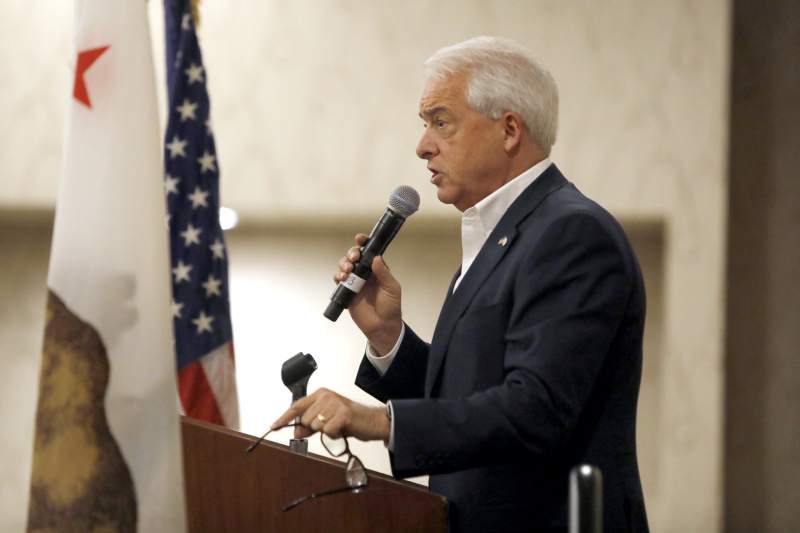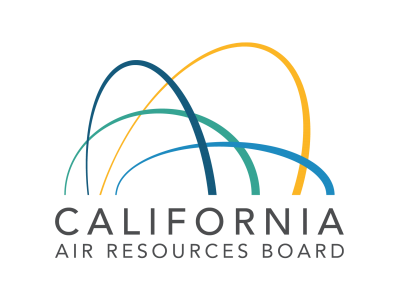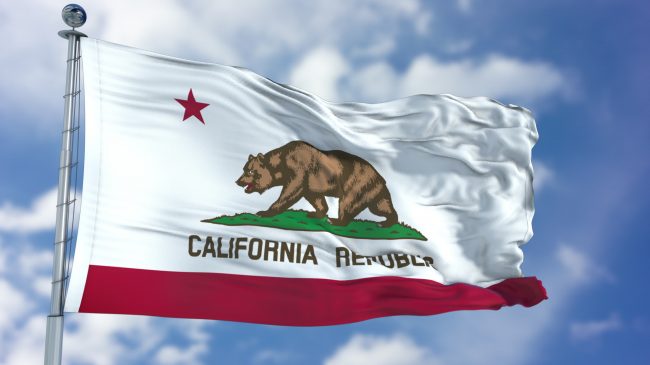
Santa Monica Airport (Photo: Evan Symon for California Globe)
Could Gov. Reagan Have Foreseen the CARB Never-Ending, Monomaniacal Quest?
Zeno’s Government: The Government of Diminishing Returns
By Thomas Buckley, February 27, 2023 2:45 am
In 1967, then-Governor Ronald Reagan signed the legislation that created the California Air Resources Board, known as “CARB.”
One of CARB’s tasks was, as the name implies, to assist in reducing the terrible smog that plagued Los Angeles and, buoyed by the singing of the Clean Air Act by then-President Richard Nixon in 1970, it without question made significant progress.
For example, in 1980 Los Angeles had 80 “good/moderate” days of air quality and 159 days of “very unhealthy/hazardous” air quality. By 2021, those numbers had been more than turned upside down, with 269 “good/moderate” days and only one hazardous day in the year. In fact, the numbers showed vast improvement by the early 1990s.
It should be noted that smog has been a problem in the Los Angeles basin forever; one of the worst smog days on record occurred in 1903 and Spanish conquistadors noted how the basin captured the smoke from the fires of the indigenous peoples.
So CARB and the Clean Air Act did their jobs; kudos to Nixon and Reagan.
However, it is extremely unlikely that Reagan could have foreseen that in 2023 CARB – in its never-ending and monomaniacal quest to scrub shiny every molecule of air no matter how expensive, intrusive, and absurdly utopian it may be – would be involved in placing excess methane detection satellites – “Fartniks,” if you will – into space.
If nothing can ever be completed, no goal fully realized no matter how much time, energy, and money is put towards that end, then is it possible that the snide remark of “good enough for government work” may actually be, in practice, a good standard for regulatory agencies to follow?
At what point, when very significant progress is made towards solving an essentially unsolvable problem – unless you eliminate most humans and dial the state of civilization back a few hundred years – is a government agency “done?”
In other words, when is government work good enough? When have the returns diminished to the point where the effort is no longer needed?
Apparently never, especially when an agency can keep moving its own goalposts in order to justify its continuing existence. CARB, of course, found climate change (and, obviously, racism) as its new white whale a few years ago and, since by definition the climate (not the weather) is always changing, it can never “declare victory” and close up shop.
CARB is not the only example of a government (or private non-profit) agency that actually could almost certainly pretty much be eliminated or vastly scaled back, thereby saving taxpayers billions of dollars with little or no negative impact on everyday life.
At the federal level there are dozens (really probably hundreds or maybe just one really really really big one) of examples of such programs. From the $400 million per-year Rural Electrification Administration (started in 1935 when it was actually needed but for some reason still around) to the Depression-era Export-Import Bank, which loans money mostly to big corporations that can get money elsewhere, the government – at every level – is riddled with obsolescence (putting aside for the moment the discussion of if the programs were needed in the first place.)
This occurs because government programs – at any level – are extremely difficult if not impossible to actually get rid of. Even the smallest and silliest project has its supporters in and outside of government.
For example, while it may seem odd that government funds are used to study the mating habits of snails, things like that are only tiny parts of the billions the government gives to universities and research institutes every year and those universities and institutions will defend to their last breath every dime they get even if they agree that they are small and silly.
The recent Biden administration move to create a massive Diversity, Equity, and Inclusive inter-departmental project/policy/thingamabob is a very recent example of the “something being created that will almost assuredly be impossible to get rid” problem. Any move to even trim the idea will be met with howls of “Racism!” from the already built-in outside stakeholder groups that stand to benefit from the increased power and influence and new funding it will afford them.
Coupled with this mission creep is, of course, the concomitant regulatory creep, with CARB being a prime example. But this phenomena can be seen throughout government – California now requires each individual standalone single-family home be outfitted with an internal, commercial grade fire sprinkler system, even though (wildfires aside) more than 90% of all firefighter call-outs in the state are for medical rather than fire reasons.
From parts per million chemical standards to parts per billion, from having to wear seatbelts to systems that will not you operate your car if the car thinks you might be drunk, and from “two weeks to stop the spread” to a primal gutting of American life in the name of safety, these slippery slope snowballs pervade public life.
The private(ish) sector is not immune to organizations redefining their journeys the make sure they never end.
Take, for example, the March of Dimes. Originally started as an effort to both find a vaccine against polio and to help those already stricken, the organization in the early 1960s was facing a dilemma. With the vaccines (real vaccines that actually kept you from getting, by the way) pretty much eradicating the disease, the group was faced with a choice: declare victory and essentially close up shop or continue forward and not waste the fundraising and organizational skills and socio-political capital they had built up over the previous 30-odd years. They chose the latter and continue to this day as a very well-respected and important group, leading various initiatives to fight numerous childhood maladies – just not polio.
In the March of Dimes case, they unquestionably made the right call and they continue to serve a vital function. But, respectfully, to state that there were no, shall we say, personal motivations involved in that decision strains credulity.
It can be argued that the government of diminishing returns has at least one “positive” aspect – it keeps people busy. Now that the nation has turned into a service/regulatory economy, one can only imagine what the unemployment rate would be if there was no middling make-work to do. It’s the same reason the flat “so simple you can do it on a postcard” income tax concept dies a grisly death every few years – millions of people depend upon the complexity of the tax code for their livelihood.
This problem reminds one of Zeno’s Paradox, a thought experiment that posits if a person moves halfway closer to their goal with each step they will never finish their journey because, no matter how minuscule the distance that remains, they can only travel half of it.
Similar to the law of diminishing returns, the paradox – while a reductio ad absurdum exercise – clearly asserts that nothing can ever be finished; now apply this idea to government agencies, especially agencies that purposefully extend the length of the “journey,” and you can see immensity and near-intractability of the problem.
In other words, even if California’s array of “Fartniks” do not detect any rogue methane ever they will still be up there, circling and waiting, and the taxpayer will still be paying for them … possibly forever.
- Benefit Fraud Problems and Solutions - November 7, 2024
- A Little Exit Poll - November 5, 2024
- Tomorrow’s Headlines Today! - November 5, 2024





The comparison you made in the 3rd paragraph should be measured by the fact that the ambient air quality standards in 1980’s were substantially higher than those in 2021. Meaning that if you applied the 1980’s ambient air quality standards to the 2021 ambient air quality measurements (apples to apples comparison), LA would likely have had zero unhealthy days.
That is true and a great example of regulatory creep, goalpost moving, and from parts per million to parts per billion strangulation.
A number of years go I attended a packed CARB public hearing in Sacramento. Staff was describing data they collected from farmers willing to participate in a CARB test of emissions produced by diesel and gas powered irrigation pumps. About 30 minutes into staff’s presentation a guy in the audience stood up and screamed “That’s a Goddamn lie! That’s my property they’re talking about. When they finished testing on my property they gave me the data. What they just told your Board is not the data they collected. They’re lying.” The Board threw a couple of softball questions at staff inquiring about the farmer’s accusation. Staff blew it off, saying their data was accurate. I had a long conversation with the farmer after the meeting. He was lived and did not strike me as someone prone to public outbursts. And then there’s Mary Nichols, the former CARB Chair. I could write a book about her.
I am not surprised. When CARB came up with the marine engine emissions regulations for inboard engines, I crunched the numbers, and they didn’t add up. They claimed marine engines produced a large amount of smog in the Los Angeles basin. Yet we have no lakes or rivers. I calculated that for the amount of smog they were claiming there would have to be a vessel every 30 feet on the coast of Los Angeles. I lived near the coast at the time, and most days there wasn’t even one boat. I called them up, and they blew it off saying their “consultant” came up with the numbers.
CARB is filled with liars. Don’t ever believe anything they say.
It’s ironic that two Republicans are responsible for the Clean Air Act and the establishment of CARB? While former Gov. Reagan may have had good intentions when he signed the legislation that created CARB, it has morphed into an out-of-control nightmare of a bureaucracy that is unaccountable to California citizens. The unelected members of CARB have turned into petty authoritarian and totalitarian dictators who impose a radical deep-state globalist agenda. CARB needs to be dismantled? Unfortunately, as Mr. Buckley noted, government programs – at any level – are extremely difficult if not impossible to actually get rid of?
USEPA and Cal/EPA were created during Republican administrations too, Nixon and Wilson, respectively.
CARB is a unique state agency in that its has its own separate income (from the Smog tests etc) and absolutely zero oversight. To understand how this came about from the very different agency set up when Reagan was governor the story is here..
https://www.unz.com/print/CalJournal-1977jul-00224/
..in the sorely missed California Journal.
Like almost all public policy disasters in the state the story starts…Back during the first Jerry Brown term as governor in the 1970’s..
Jerry Brown made Tom Quinn who ran his election campaign in 1974 head of CARB and Quinn did not want to reduce smog, he wanted to ban almost all private motor vehicles. But of course for people like him, rich kids, they were all going to have their very expensive electric cars. Sound familiar? And this was in the mid 1970’s.
And nothing has changed since. Zero accountability and above the law. As the MTBE scandal proved.
Lots of other early days of CARB stories here.
https://www.unz.com/print/CalJournal-1977feb/Search/?PubType=All&Text=air+resources+board&Action=Search
This seems to be the only place online where the archives of the California Journal are readily accessible. An absolute gold mine of backstories for the last 60 years of Cal politics.
CARB is a great example of government overreach.